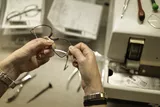BANGKOK – 16th April 2024 – HOYA Vision Care has just revealed results of the Early Experience Program (EEP), a post-marketing surveillance focused on the patient experience of MiYOSMART sun solutions that began shortly after the 2023 launch of the new photochromic MiYOSMART Chameleon spectacle lenses.
The goal of the Early Experience Program was to evaluate the acceptance of MiYOSMART Chameleon spectacle lenses, as well as gain insights into the wearers’ habits. HOYA Vision Care proactively collated data from 100 patients aged 3 to 20 years old, located across Europe, Asia, Australia and New Zealand.1
The EEP was designed to answer Eye Care Professionals’ and parents’ questions surrounding the MiYOSMART sun range and gain insights into the patients’ habits and behaviours.1 As such, the data focus was on adaptation and tolerability in patients of different ages and ethnicities, satisfaction and compliance, and outdoor behaviour.1
The results of the EEP showed that the MiYOSMART Chameleon spectacle lenses allowed rapid adaptation, with 80% (n=65) of patients adapting within one day to their new lenses.1 Of note, teenagers adapted to the new lenses as quickly as younger children.1 Additionally, 100% (n=65) of Chameleon spectacle wearers, both new wearers and experienced wearers, were satisfied with their visual performance during both outdoor and indoor activities and were comfortable with the fading back to clear, regardless of geographic location.1
The EEP also collected satisfaction data at the 3-month milestone, showing that an impressive 98% (n=55) of wearers were overall satisfied with their MiYOSMART Chameleon spectacle lenses.1 This number is likely to boost Eye Care Professional confidence in recommending this solution to their young patients.
Aside from the promising satisfaction and adaptability results, HOYA Vision Care was also able to collect data on the effect of MiYOSMART Chameleon on wearing time. Children wearing MiYOSMART Chameleon showed satisfactory compliance, with an average wearing time of 12 hours a day on weekdays.1 This wearing time translates to a satisfactory treatment time, which in turn has the potential of maximizing the effectiveness of myopia management in children.
The EEP also demonstrated that wearing MiYOSMART Chameleon for 2 weeks significantly reduced light sensitivity in patients (n=12) receiving concurrent low-dose atropine treatment (22% baseline; 50% after 2 weeks of wear).1 Although further research on a bigger sample may be needed to draw conclusions, the results in the area of combination treatment are promising.
“We are very pleased with the results of our Early Experience Program, showing great adaptation, tolerability and overall satisfaction in patients of different ages and ethnicities. Additionally, the findings surrounding photophobia and wearing time, highlight the potential of MiYOSMART Chameleon to improve the outcomes of myopia management in children, while being comfortable and retaining good visual performance. We will continue touching base with ECPs and their patients to monitor their experience with MiYOSMART solutions and gain more valuable insights in the future”, said Marianne Goldwaser, Professional Affairs Manager at HOYA Vision Care.




